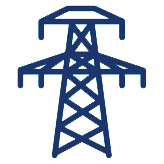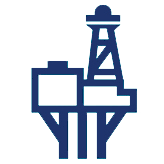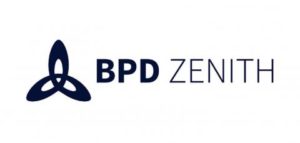
The mining industry is a key part of the worldwide drive to decarbonise and shift to renewable energy. Minerals such as Lithium, Cobalt and Copper are essential for the huge increase in electricity storage and transmission which will be required over the next few years. So even as traditional mining activities are scaled back, the industry as a whole is expected to expand, with massive investment in new equipment and technology.
In recent decades the mining industry has become progressively more mechanised, with a shift to very large open-cast mines enabling much larger equipment to be used, with far fewer personnel. However, this also means that as the size of individual assets has increased, their value has increased significantly as well. So looking after these assets, both in terms of maintenance and tracking, has become increasingly more important.
The mining industry also has a reputation for being hazardous; and although the number of incidents has reduced dramatically in recent years, mining environments remain extremely challenging to work in, and operators must maintain constant vigilance to protect their personnel and their assets.
Monitoring to Avoid Equipment Failure
Demand for formerly niche materials such as cobalt, lithium and rare earth metals is also rapidly increasing, as these are essential for high-growth industries such as electronics and batteries. These materials are often found in remote areas with poor infrastructure and hazardous environments, where the risk of equipment failure may be high, and where lead times may be long for replacement parts. This makes it all the more important that equipment be monitored, to avoid unexpected problems.
Recent developments in EAM solutions may be particularly useful for miners. The market leader, IBM Maximo®, has added a range of apps to expand its capabilities, and is now called Maximo Application Suite (MAS). Various MAS apps can leverage IoT technology to monitor equipment remotely.
These include Maximo Monitor, which can take remote sensor-based data inputs, and uses an algorithm to analyse them for any anomalies. Maximo Predict can compare current data inputs with historical data, which can then be used to predict likely failure times, and plan maintenance accordingly.
Another MAS app, Maximo Visual Inspection, enables users to build and ‘train’ their own visual models, and can compare a camera image with the model to spot anomalies. This can be used, for example, to check the condition of a vehicle’s tyres, or can be used with a drone-based camera to check the exterior condition of works or buildings.
This will enable technicians to use advanced techniques such as augmented reality (AR), or access live remote assistance, when they are troubleshooting or performing maintenance tasks, helping to achieve an increased first-time fix rate and generate cost savings.
A P5G network will can help you to implement some of the features available in Maximo Application Suite – for example, Maximo Monitor can take live data feeds from sensors on assets, giving you advance warning of potential problems, and helping you schedule maintenance more efficiently. Using P5G opens up the possibility to use battery or solar-powered, standalone sensors, which can be used on mobile assets, or for temporary monitoring.
An extension of Visual Inspection, Maximo Visual Inspection Edge enables complex decisions to be made on an Edge device. This is very useful in high-speed environments such as production or sorting lines, where production cannot be halted while waiting for feedback from a central server.
Digital Twin of your Assets
MAS also enables you to compare your assets with a Digital Twin – many equipment manufacturers now provide digital twin models which can be uploaded into MAS. This comparison can be used to analyse particular areas of wear, and to assist with maintenance.
The IoT and Edge capabilities of MAS can be used in conjunction with WiFi or Private 5G (P5G) networks – P5G offers particular benefits to miners, as they are often operating over a large area, using highly mobile assets. P5G maintains a constant connection to all assets, and repeaters are small enough to be used underground or in confined areas.

Scheduling ensures a better first-time-fix rate
EAM integrators such as Peacock Engineering can also provide advanced scheduling solutions – these can ensure that the right engineers are sent to do a maintenance task, improving your first-time fix rate, and minimising non-productive time.
Mobile EAM improves efficiency
There are also sophisticated mobile EAM implementations available, such as Peacock Engineering’s Fingertip, and Maximo Mobile, so that maintenance workers in the field have instant access to data about assets. They can access and issue work orders from the point of work, and perform a wide range of other tasks such as inventory management, supply chain management, and equipment calibration. This is particularly useful for workers operating on a large site, who may not get into an office all day.
Fingertip also includes sophisticated conditional-logic forms, which can guide field engineers through all processes in a particular order, ensuring that all the information you require is captured at each stage, which can include images, GPS co-ordinates, and more. This ensures you maintain a full digital audit trail of all maintenance work carried out, and that your processes are enforced in the field, improving safety and minimising risk.
For more information about how MAS apps can help your business, please contact us today on +44(0)20 3356 9629 or info@peluk.org.
Contact us now for a demo or more information about Maximo® EAM solutions for your organisation.
Call us on +44(0)20 3356 9629 or use our contact form below.
Contact us now






